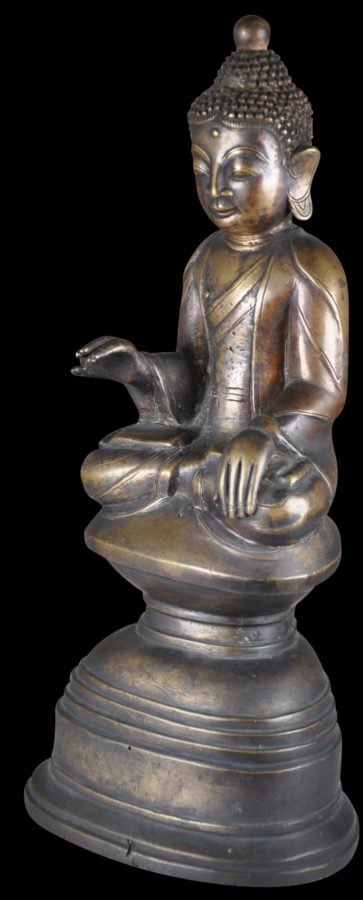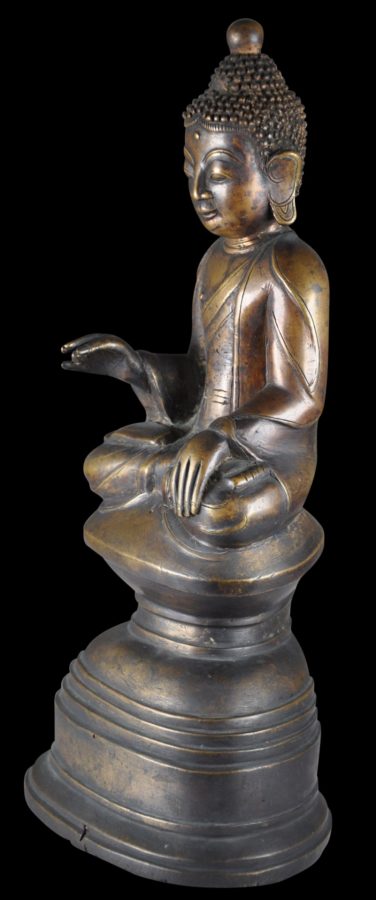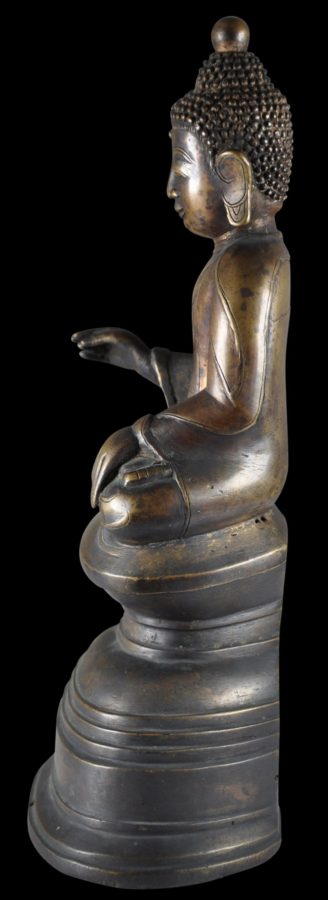This elegant Buddha image has been cast from bronze in the Shan style but with idiosyncratic differences.
It has a pleasing face with clearly delineated, fine features.
The image sits cross-legged in Bhumisparsa mudra pose on a tall, tiered and waisted throne that is unique to Shan, Burmese and Thai images.
The head bends slightly forward, and the eyes are half-closed and meditative. The nose is prominent and wide. The lips have a slight smile with the upper lip protruding and having a marked philtrum.
The eyebrows are prominent and double.
The ears are elongated and as such are a reminder of the Buddha’s princely origins. But they do not reach the shoulders which is unusual and is an indicator of a return to the Pagan tradition of Buddha image composition.
The hairstyle is akin to neat rows of peppercorns. The head is surmounted by an unusual, spherical ushnisha.
The image wears the robes of a monk. The robes cover both shoulders but the right nipple is exposed.
The reverse of the throne has been incised with an inscription of four lines either in Burmese or Shan script and undoubtedly names the donor of the image.
The image is in excellent condition. It has a fine, golden patina. It is a far better images than most in this style and of this period.
References
Green, A., (ed.), Eclectic Collecting: Art from Burma in the Denison Museum, NUS Press, 2008.
Karow, O., Burmese Buddhist Sculpture: The Johan Moger Collection, White Lotus, 1991.
Lowry, J., Burmese Art, Victoria and Albert Museum, 1974.
Somkiart Lopetcharat, Myanmar Buddha: The Image and its History, Siam International Books Company, 2007.










